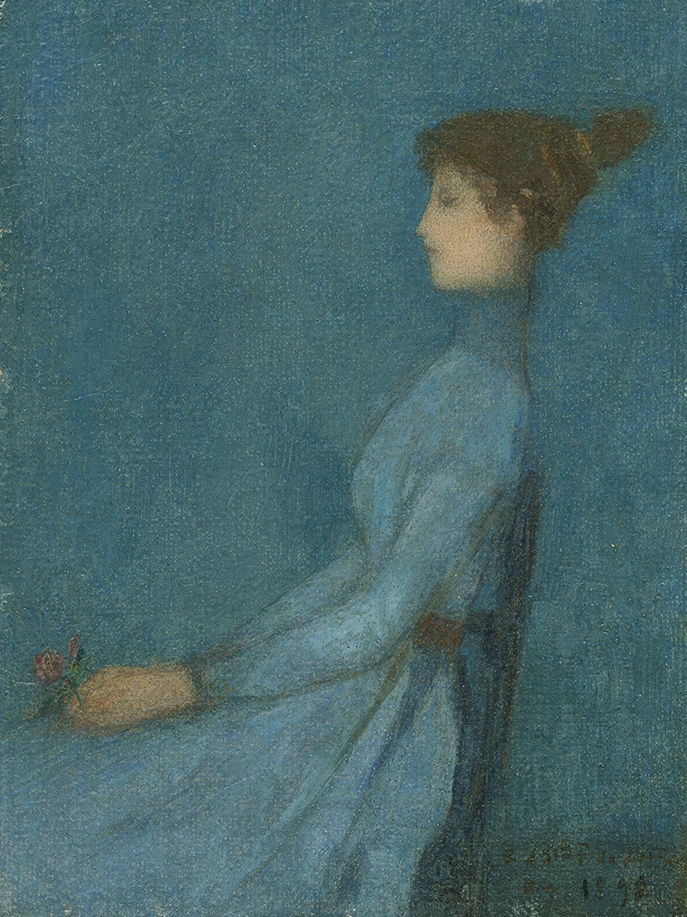“C’est vraiment de l’art, parce que cela sort d’un rêve et d’un cœur” [“It’s really art, because it comes out of a dream and a heart”], said a critic about Danguy . This delicate and superb portrait is one of the best pieces by the symbolist painter Jean Danguy. His symbolist oeuvre – in painting – is very rare and virtually unobtainable.
The artist had a discreet career and is now somewhat forgotten, although he exhibited regularly and won several prizes at the salons. His father was a painter, his mother an engraver, and he studied from 1884 at the Ecole des Beaux-Arts in Paris but left after a few years to enter Gustave Moreau’s studio. Inspired by this master, Danguy explored symbolist subjects and realized essentially large religious compositions. With another pupil of Moreau, Edgard Maxence, he participated at the Salon Rose+Croix of 1895 and 1897. Around the same years, as a talented printmaker, Danguy also contributed to different publications with his symbolist prints, in L’Estampe and L’Epreuve. His most famous one, Melancolie, represents a radiant and slender woman, also alone in an introspective mood.
Princess from a Legend was painted during his immersion into the symbolist circle. Pale and silent, the delicate feminine figure is surrounded by a blurry and blue background. With her dress, painted with the same palette, the attention is focus on her face and hand. Holding a rose, in a static position, the woman seems lost into a melancholic meditation. Her whole world is blue. Her hair and dress are from another time, but no other sign of identify. Close to Maxence, Danguy saw the medieval princesses that inhabited his friend’s oeuvre. Even if the subject is similar – woman and flower – Danguy created here a different world: his princess is not a strong and sensuous feminine apparition, but she is almost like an Icon, imbued of quietness and contemplation. Often of small formats, portraits by Danguy have been compared to Jean Clouet’s miniaturist figures, of the 16th century.
His works are present in various museums, in Paris (Petit Palais, Ecole Nationale des Beaux-Art), Nancy, Boulogne-sur-Mer and Arceuil, and in the church of Saint Louis d’Antin in Paris.






